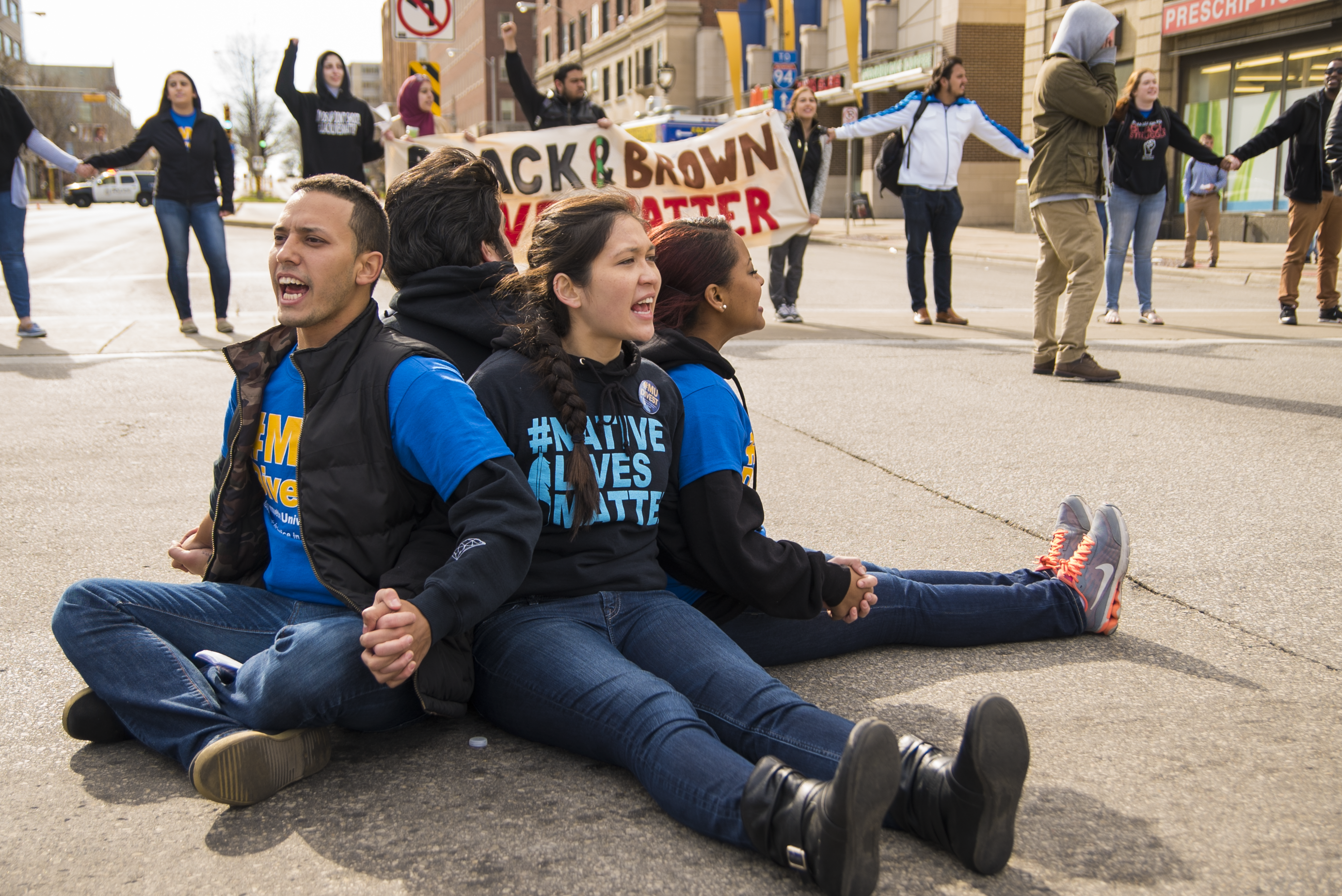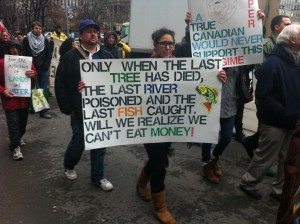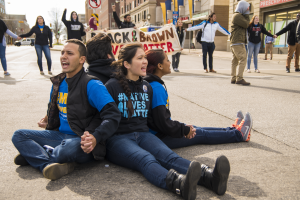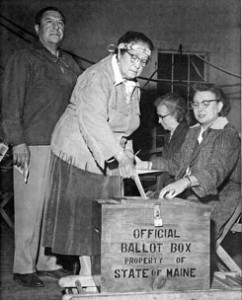Silent Voices: Indigenous People in America and the 2016 Presidential Elections

Again I must stray away from the theme of my blog as there is something that is deeply concerning to me in relation to the 2016 presidential election in the United States….

It seems peculiar to me, as a Canadian, that the issues facing indigenous people play such a microscopic (or dare I say it non-existent) role in the United States election. I am not saying that we deal with it any better in Canada, or that our treatment of indigenous peoples in Canada is light years ahead of the US (because it isn’t) but we can surely say that there is at the very least some level of public discourse around it and that it did play a major role in the 2015 election. All leaders had some part of their platform dedicated to indigenous issues and in the cases of Justin Trudeau, the leader of the Liberal Party, and Thomas Mulcair, leader of the New Democratic Party (NDP), they endorsed a “nation-to-nation” relationship between the federal government and indigenous peoples. Whether actual concrete action has been taken thus far by the Trudeau Liberals is another debate altogether; but the fact of the matter is that in Canada, the issue of indigenous affairs has openly been discussed and will likely (hopefully) continue to be discussed. I haven’t seen this in the slightest thus far during my obsessive viewing and observation of the American election. Why not?
Well, that question seems particularly difficult to answer mainly because I had a relatively difficult time finding actual information on indigenous people in relation to this election. There were some things I did find however. For instance, Bernie Sanders does in fact (to a small degree) make reference to indigenous people on his website: he actually visited a Native American settlement while in New Hampshire.He also hired Tara Houska, a tribal rights attorney to serve as his Native American advisor. During his visit to the Meskwaki Indian Settlement precinct in Tama County, home to the 1400 membe r Sac and Foc Tribe (a precinct where he beat Hillary 84 % to 16%), he announced a Native American policy committee to develop and guide his tribal policy platform (the details of that plan can be found at this link if you’re interested). This policy however, is only for on-reserve Natives, yet 78% of indigenous people in the US live in urban communities. I also was able to find an article about how Hillary Clinton is attempting to court the indigenous vote but was unable to gain access to it. I was also unable to pull out anything on the Republican side.
r Sac and Foc Tribe (a precinct where he beat Hillary 84 % to 16%), he announced a Native American policy committee to develop and guide his tribal policy platform (the details of that plan can be found at this link if you’re interested). This policy however, is only for on-reserve Natives, yet 78% of indigenous people in the US live in urban communities. I also was able to find an article about how Hillary Clinton is attempting to court the indigenous vote but was unable to gain access to it. I was also unable to pull out anything on the Republican side.
My point is however, if these plans exist why hasn’t anyone heard anything about them? One issue can be the candidates themselves. In any main public or televised major speech, although perhaps I have just missed it, but I have not heard any candidate discuss Native American issues publicly. The only mainstream American public figure that has even briefly mentioned indigenous peoples during this campaign season that I know of, was Leonardo Di Caprio during his Oscar acceptance speech last night, as well as during his Golden Globe win. But of course candidates are not solely to blame. The media also plays a huge part in what is and what is not covered.

Christopher Josey, a doctoral candidate for the University of Ilinois found that among the top 20 Internet news sites by traffic, from The Daily Beast to The New York Times, Native Americans accounted for 0.6 percent of the people portrayed, a disproportionate amount considering they make up 1.7% of the US population, numbering 5.2 million in total, according the most recent US Census. And when they are portrayed, it is often stereotypically. “By neglecting them in coverage and showing them in stereotypical ways when they do,” says Josey, “news media are communicating that Native Americans are not a vital part of the national conversation on race.” This is extremely unhelpful, as Native Americans are equally as immersed in the issue of race as even African Americans. According to the Centre of Disease Control and Prevention, police kill Indigenous Americans at almost the same rate as African Americans. Between 1999 and 2013, an average of .29 per 100,000 Native Americans were killed by police, compared to .3 per 100,000 for blacks and .11 per 100,000 for whites. Despite this harrowing statistic, as Josey says, Indigenous Americans seem to be completely excluded in racial discourse. Similarly, while most news coverage has been focused on Flint, Michigan (which is undeniable an equally important issue deserving of attention) dangerous mining practices around reserves have forced indigenous people to face extreme, third-world type water contamination. This is not new. In 2014, to address these distressing statistics (among many others), Native Lives Matters, a grassroots advocacy group was created, having similar goals to the Black Lives Matters movement. However, most people do not even know of its existence.
I don’t want to discount other popular mainstream publications like the Washington Post that have, in the past, published balanced coverage of indigenous people. But the only (sort of) mainstream news website that I found that did have consistently adequate coverage on indigenous Americans was Al Jazeera America (but oh wait! That’s closing down…) . Media is again not the only issue. Maybe indigenous people just don’t want to be involved? I mean their voter turnout is the lowest out of all Americans.

This too is not exactly the case. In fact, low turnout has a lot to do with the hindrance Indigenous Americans face in actually physically voting. In north-central Montana, for example on the Fort Belknap Indian Reserve, voters have to go to the Blaine Country Courthouse to register. This isn’t so simple though. Courthouses like the Blaine Country Courthouse are in largely white-inhabited county seats, not on reservations and as the nation’s fourth largest state, driving to that courthouse from an isolated reservation could be a daylong trip. This is just to register though; they must return to the courthouses later to vote.
To return to my original question, why are indigenous people such a non-existent issue in the public eye when comparing Canada and America? Perhaps it is the nature of Canadian governance where indigenous people are explicitly the responsibility of the Canadian federal government in the constitution? Maybe it’s differences in historical policies of assimilation (which were both pretty shameful)? Answering this question is even more complicated because of the exclusion of indigenous people from coverage in American media, and by extension, in this, and all, elections. Unfortunately, it doesn’t seem like discourse will shift anytime soon.
This is an unfortunate reality but that doesn’t mean you can’t get involved with, start or follow the conversation. I urge you all to research this subject, maybe even try to contact a campaign team and lastly to follow Native Lives Matter on Twitter: https://twitter.com/nlmcoalition.
In Solidarity,
Sam
